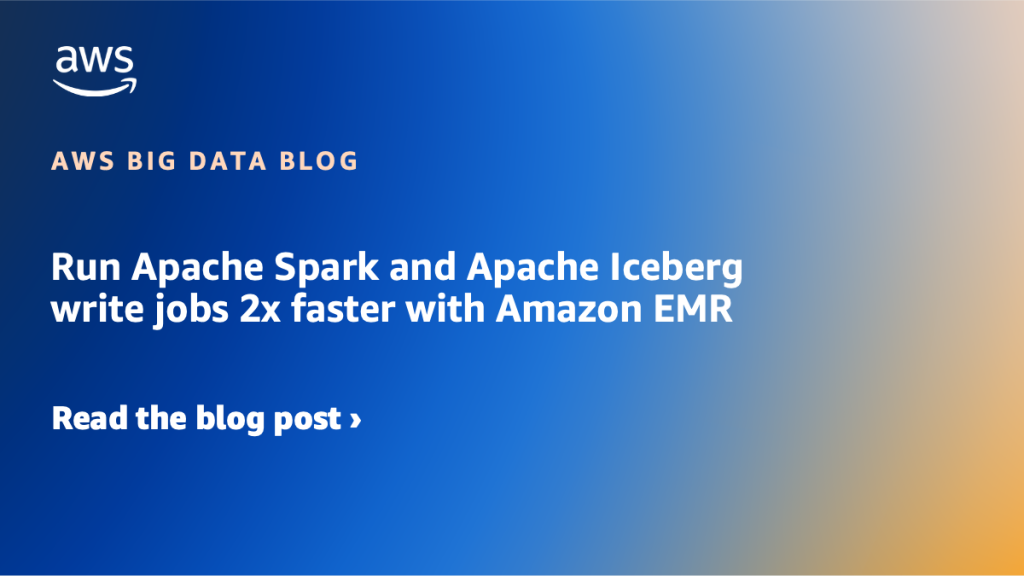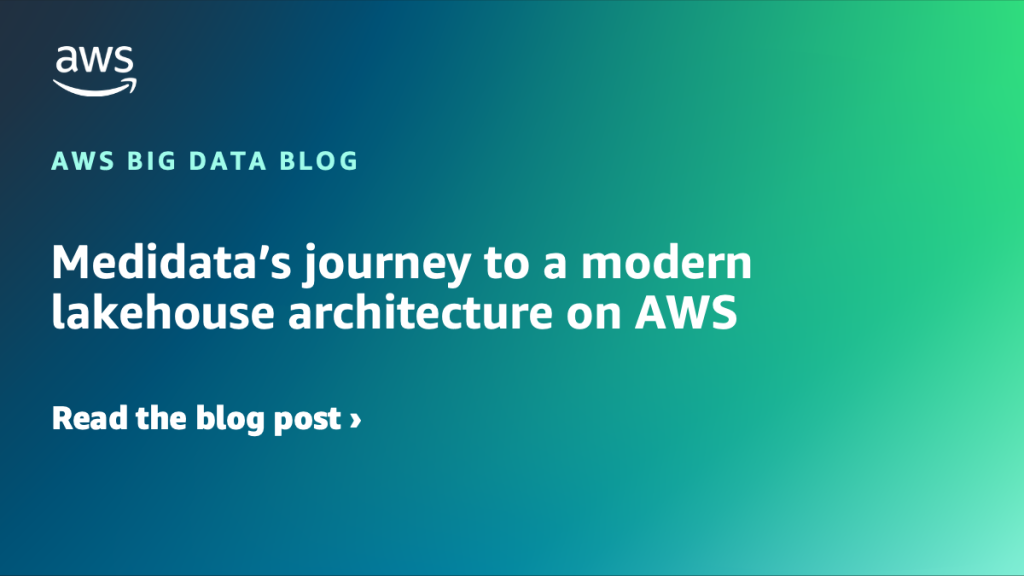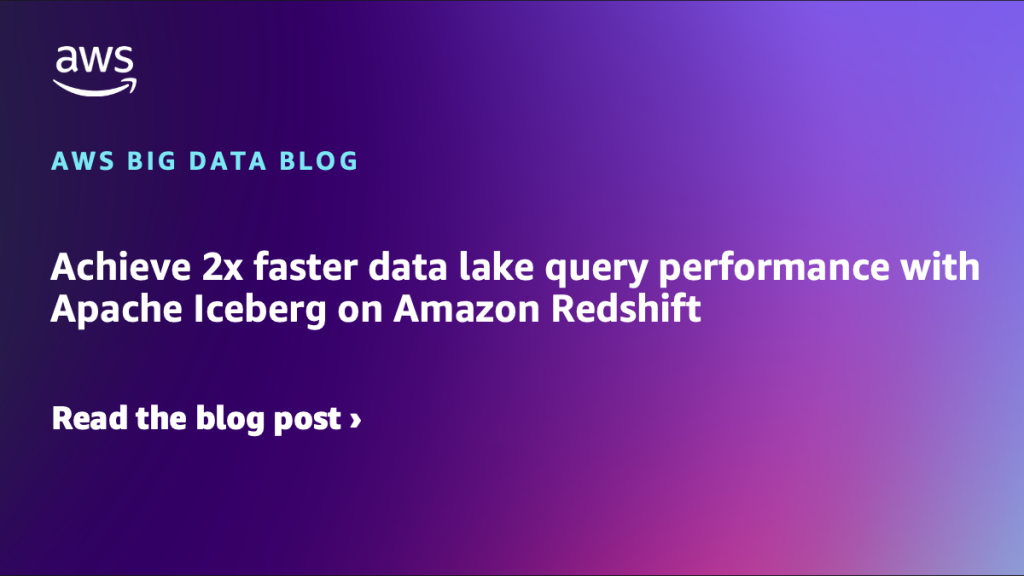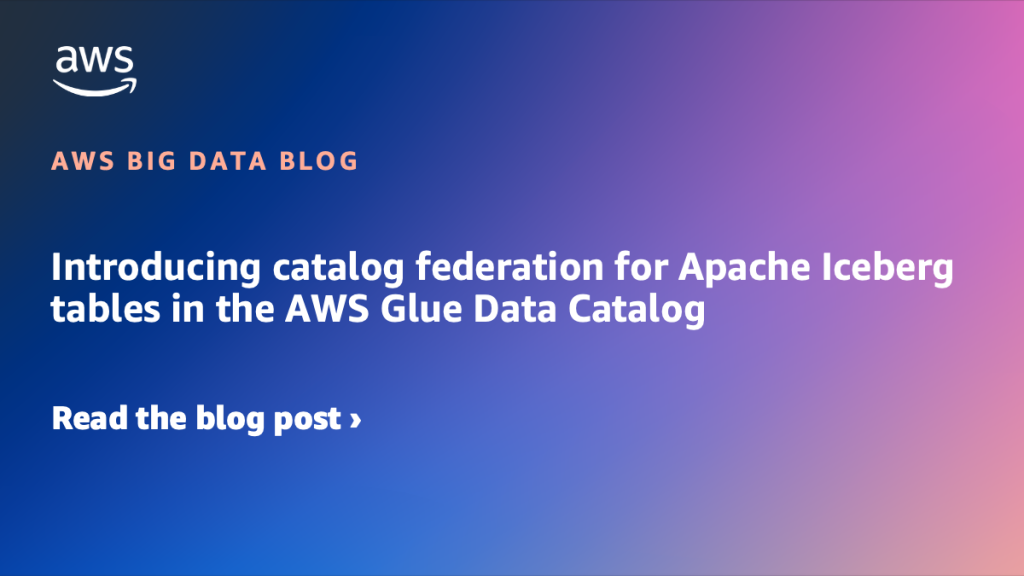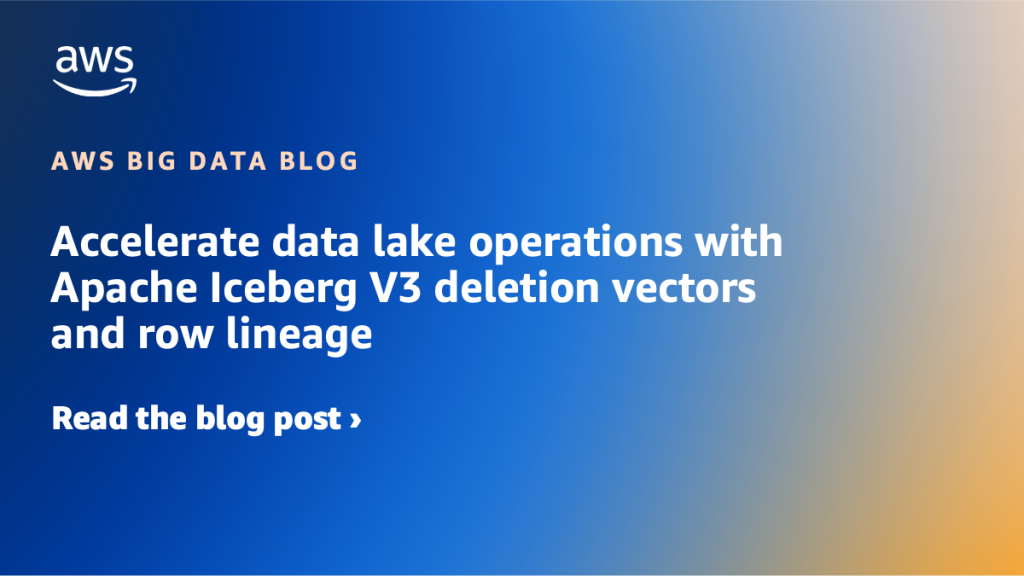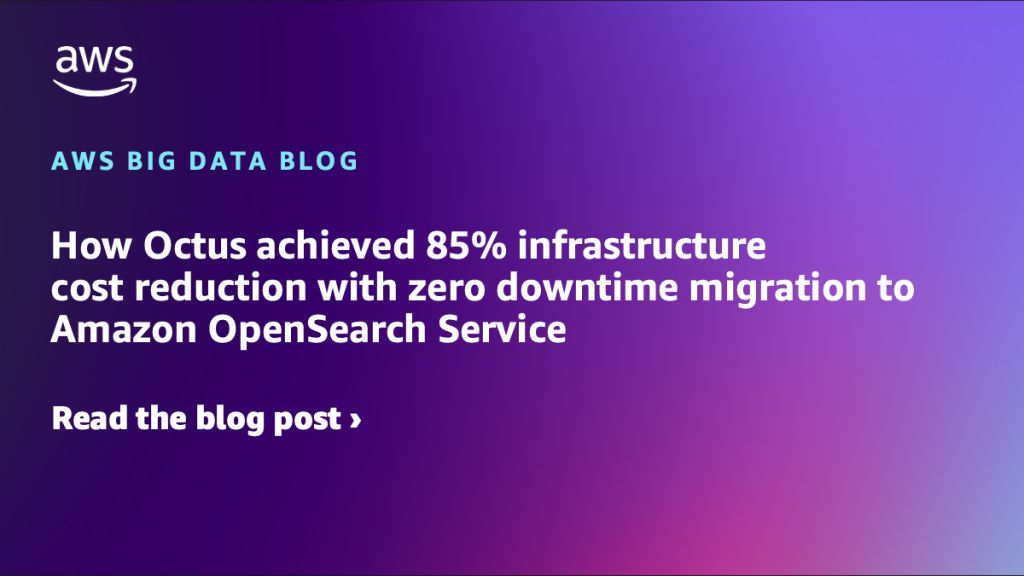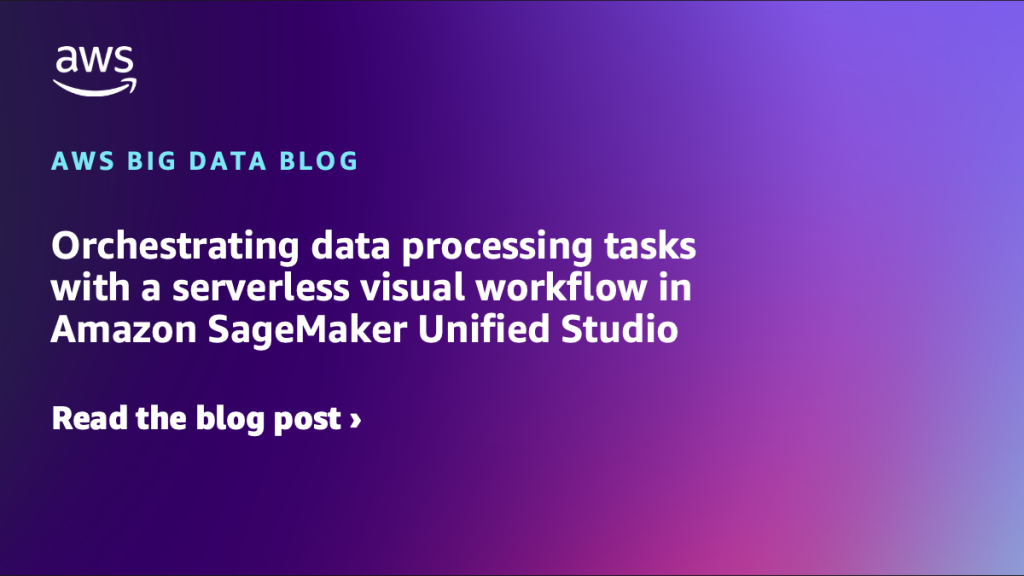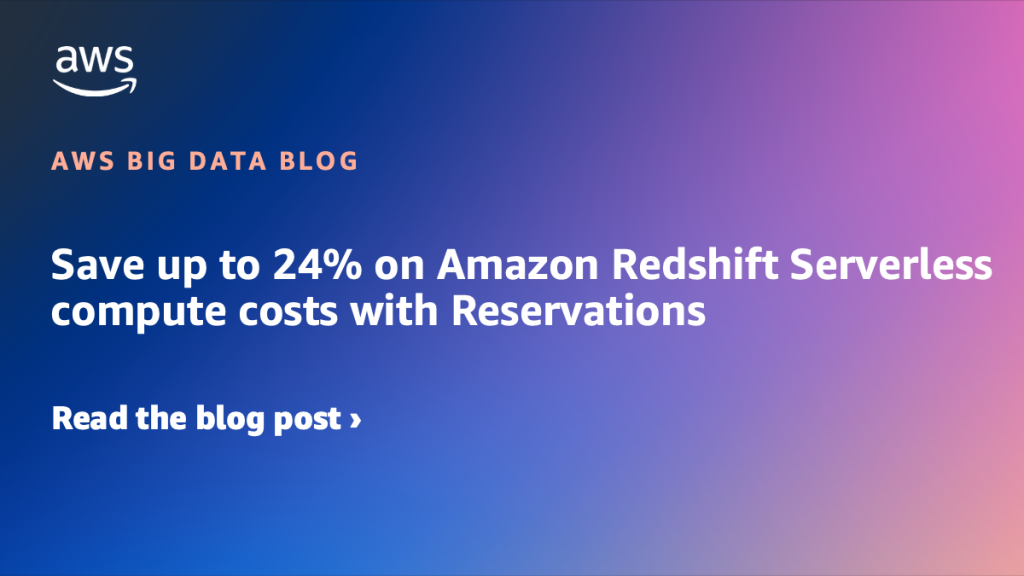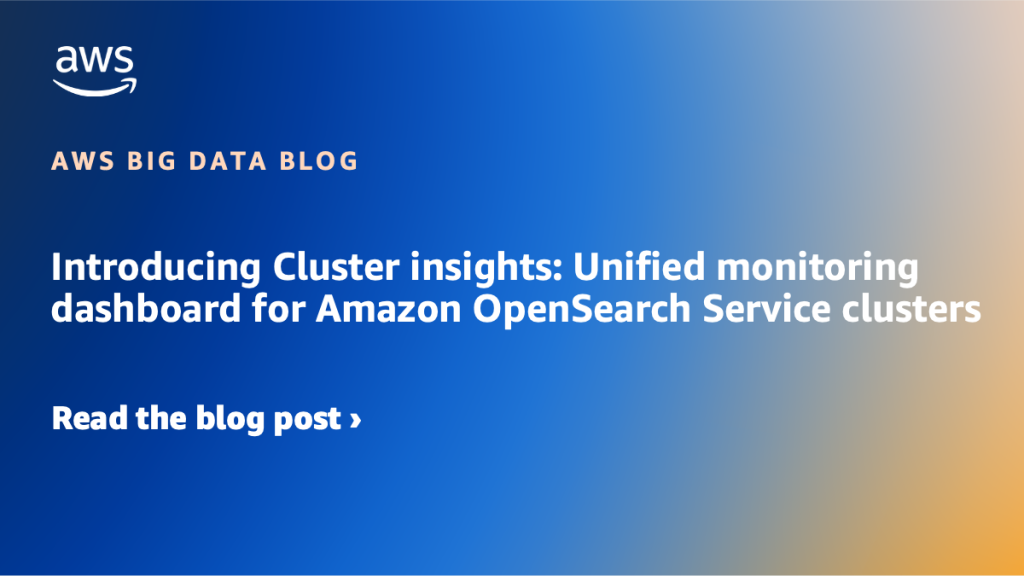AWS Big Data Blog
Category: Analytics
Run Apache Spark and Apache Iceberg write jobs 2x faster with Amazon EMR
In this post, we demonstrate the write performance benefits of using the Amazon EMR 7.12 runtime for Spark and Iceberg compares to open source Spark 3.5.6 with Iceberg 1.10.0 tables on a 3TB merge workload.
Medidata’s journey to a modern lakehouse architecture on AWS
In this post, we show you how Medidata created a unified, scalable, real-time data platform that serves thousands of clinical trials worldwide with AWS services, Apache Iceberg, and a modern lakehouse architecture.
Achieve 2x faster data lake query performance with Apache Iceberg on Amazon Redshift
In 2025, Amazon Redshift delivered several performance optimizations that improved query performance over twofold for Iceberg workloads on Amazon Redshift Serverless, delivering exceptional performance and cost-effectiveness for your data lake workloads. In this post, we describe some of the optimizations that led to these performance gains.
Introducing catalog federation for Apache Iceberg tables in the AWS Glue Data Catalog
AWS Glue now supports catalog federation for remote Iceberg tables in the Data Catalog. With catalog federation, you can query remote Iceberg tables, stored in Amazon S3 and cataloged in remote Iceberg catalogs, using AWS analytics engines and without moving or duplicating tables. In this post, we discuss how to get started with catalog federation for Iceberg tables in the Data Catalog.
Accelerate data lake operations with Apache Iceberg V3 deletion vectors and row lineage
In this post, we walk you through the new capabilities in Iceberg V3, explain how deletion vectors and row lineage address these challenges, explore real-world use cases across industries, and provide practical guidance on implementing Iceberg V3 features across AWS analytics, catalog, and storage services.
How Octus achieved 85% infrastructure cost reduction with zero downtime migration to Amazon OpenSearch Service
This post highlights how Octus migrated its Elasticsearch workloads running on Elastic Cloud to Amazon OpenSearch Service. The journey traces Octus’s shift from managing multiple systems to adopting a cost-efficient solution powered by OpenSearch Service.
Getting started with Apache Iceberg write support in Amazon Redshift
In this post, we show how you can use Amazon Redshift to write data directly to Apache Iceberg tables stored in Amazon S3 and S3 Tables for seamless integration between your data warehouse and data lake while maintaining ACID compliance.
Orchestrating data processing tasks with a serverless visual workflow in Amazon SageMaker Unified Studio
In this post, we show how to use the new visual workflow experience in SageMaker Unified Studio IAM-based domains to orchestrate an end-to-end machine learning workflow. The workflow ingests weather data, applies transformations, and generates predictions—all through a single, intuitive interface, without writing any orchestration code.
Save up to 24% on Amazon Redshift Serverless compute costs with Reservations
In this post, you learn how Amazon Redshift Serverless Reservations can help you lower your data warehouse costs. We explore ways to determine the optimal number of RPUs to reserve, review example scenarios, and discuss important considerations when purchasing these reservations.
Introducing Cluster Insights: Unified monitoring dashboard for Amazon OpenSearch Service clusters
This blog will guide you through setting up and using Cluster Insights, including key features and metrics. By the conclusion, you’ll understand how to use Cluster insights to recognize and address performance and resiliency issues within your OpenSearch Service clusters.
